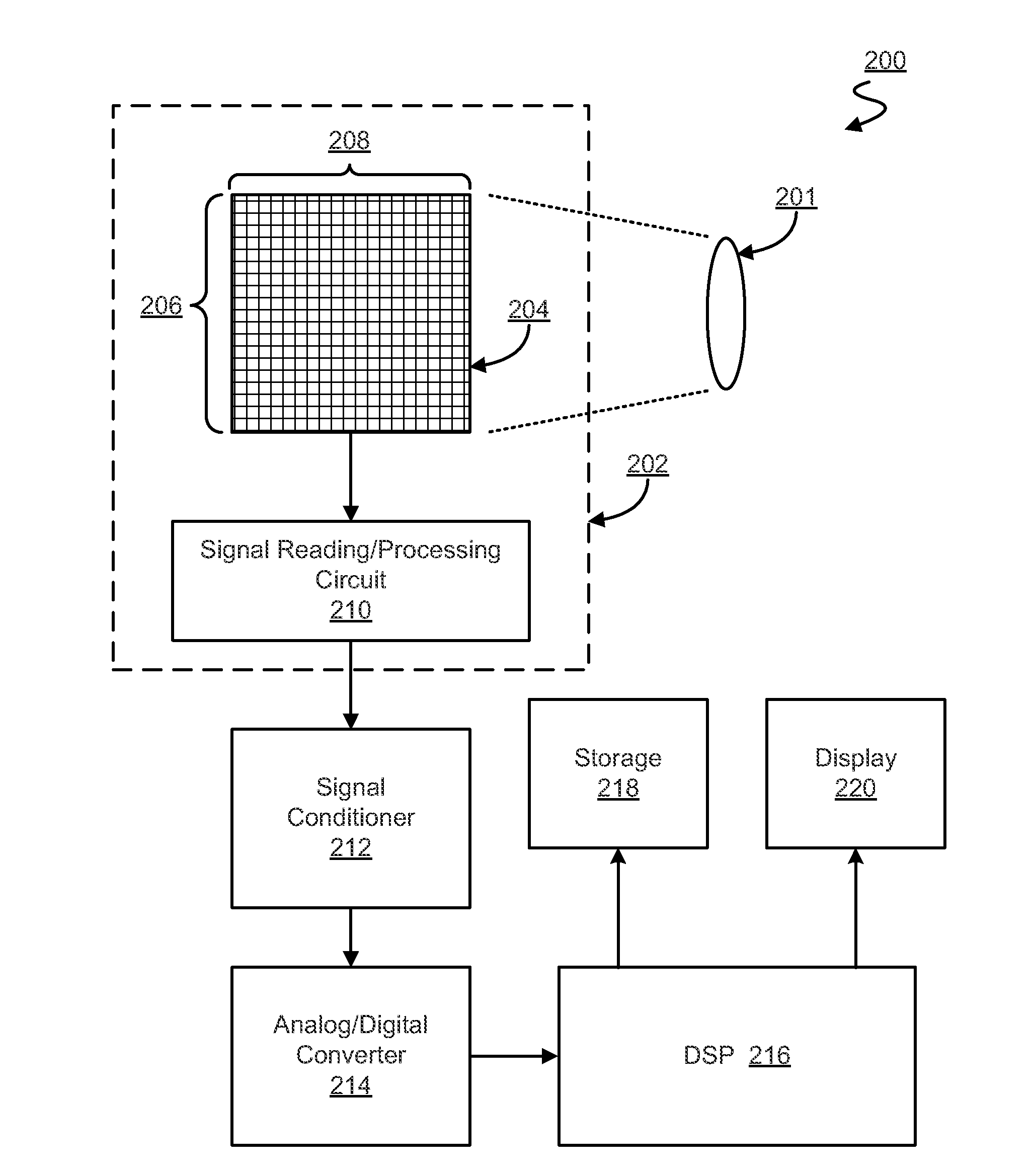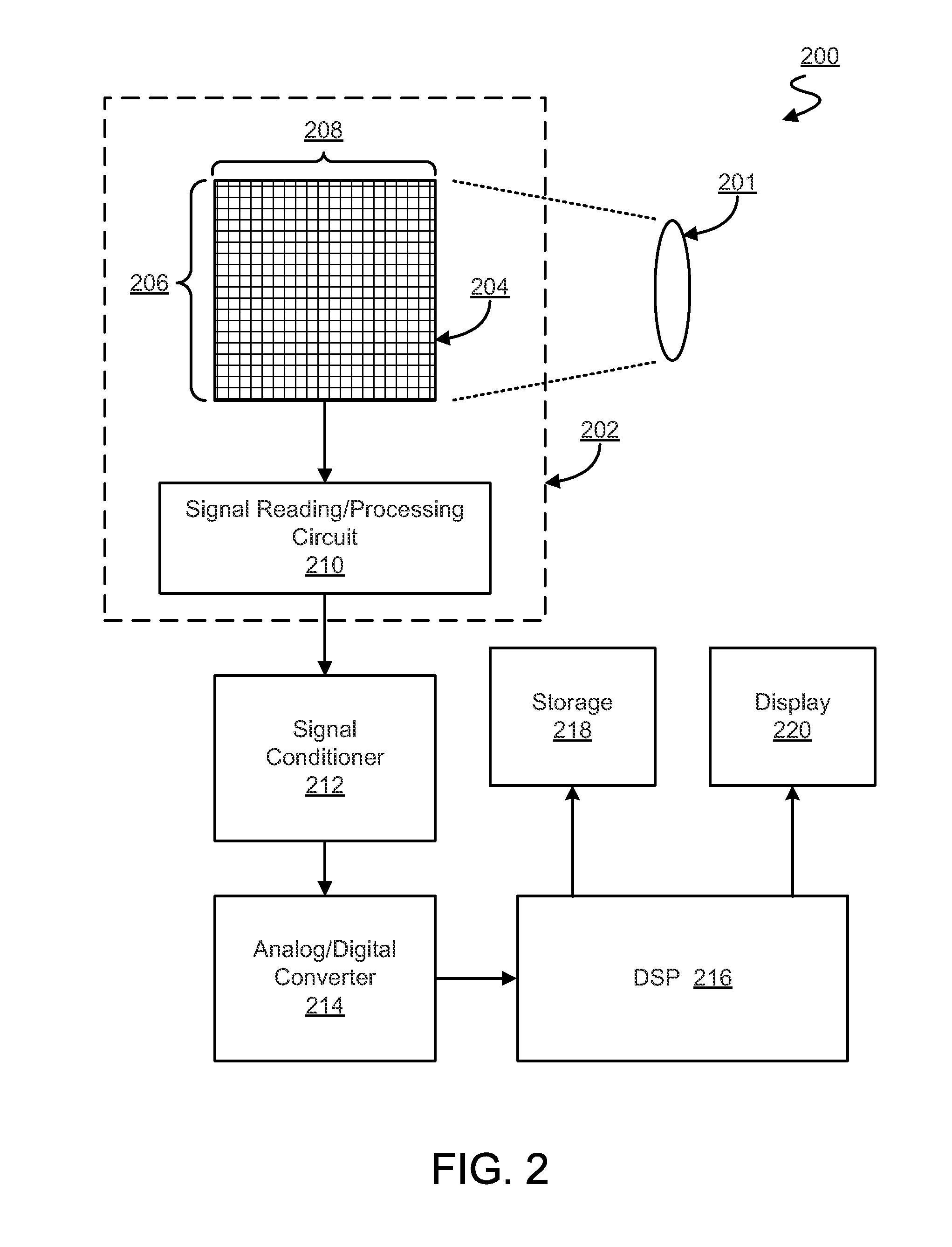Dual source follower pixel cell architecture
a follower pixel and dual source technology, applied in the field of image sensors, can solve the problems of reducing the uniformity of such a concentration, increasing the likelihood of charge trapping/releasing, and comparatively less uniform concentration of dopant in the active area
- Summary
- Abstract
- Description
- Claims
- Application Information
AI Technical Summary
Benefits of technology
Problems solved by technology
Method used
Image
Examples
Embodiment Construction
[0017]Certain embodiments discussed herein variously provide for a pixel cell architecture including two source follower transistors, each to contribute to an amplification signal of the pixel cell. A pair of source follower transistors of a pixel cell may, for example, be coupled in parallel with one another, where the respective gates of the source follower transistors are each coupled to a floating diffusion node of the pixel cell. In such an embodiment, operation of the dual source follower transistors may be based on the floating diffusion node transitioning to a voltage level corresponding to an amount of charge accumulated in a photodiode of the pixel cell. Parallel source follower transistors of a pixel cell may, in an embodiment, share an active area (e.g. including a diffusion well or other such structure) in a semiconductor substrate for the pixel cell—e.g. where respective structures of the first and second source follower transistors are variously formed in and / or on th...
PUM
 Login to View More
Login to View More Abstract
Description
Claims
Application Information
 Login to View More
Login to View More - R&D
- Intellectual Property
- Life Sciences
- Materials
- Tech Scout
- Unparalleled Data Quality
- Higher Quality Content
- 60% Fewer Hallucinations
Browse by: Latest US Patents, China's latest patents, Technical Efficacy Thesaurus, Application Domain, Technology Topic, Popular Technical Reports.
© 2025 PatSnap. All rights reserved.Legal|Privacy policy|Modern Slavery Act Transparency Statement|Sitemap|About US| Contact US: help@patsnap.com



